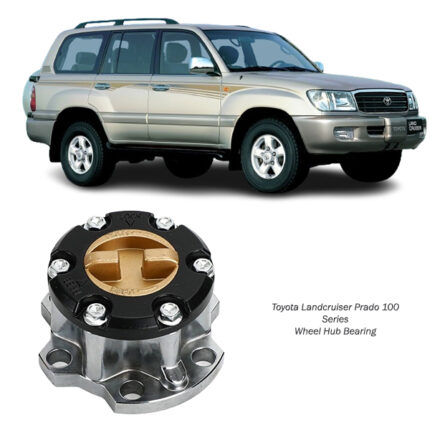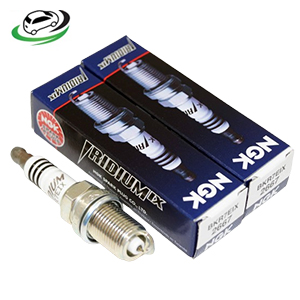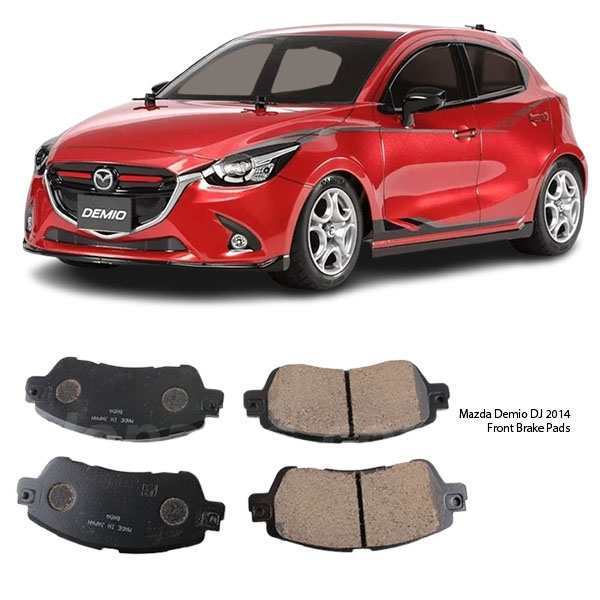-9%
Get Mazda Demio DJ Front MK Brake Pads Kit D3170 in Kenya
Front Brake Pads Kit: The Unsung Hero of Every Safe Stop
Braking isn’t just about stopping — it’s about control, safety, and precision. At the very heart of this system lies a hero you rarely see but always rely on: the front brake pads kit. Whether navigating tough terrain, sudden stops, or long journeys, brake pads are your first line of defense.
Let’s explore what front brake pads are, how they work, and why keeping them in top shape is crucial to confident driving and optimal performance.
1. What Are Front Brake Pads?
Front brake pads are friction components placed on either side of a spinning metal disc known as a rotor. Their job is to create friction against the rotor to slow or stop your vehicle. This contact turns kinetic energy into heat, which is how vehicles decelerate safely.
A front brake pads kit typically includes:
-
A pair of high-friction pads (inner and outer)
-
Clips or shims to reduce noise and vibration
Since the front wheels handle the majority of braking force, these pads wear out faster than the rear, making them a key focus in regular vehicle maintenance.
2. The Anatomy of a Brake Pad
Brake pads are more complex than they appear. Each layer contributes to the overall performance:
-
Friction Material – This surface makes contact with the rotor and is made from materials like organic, semi-metallic, or ceramic blends.
-
Backing Plate – A steel base that supports the friction material.
-
Shim – A backing layer that reduces noise and vibration.
-
Insulation Layer – Helps limit heat transfer to the rest of the braking system, improving durability and reducing fade.
Together, these parts ensure quiet, reliable, and consistent braking performance.
3. How Do They Work?
When you apply the brakes, a hydraulic or electronic system activates the caliper, which squeezes the pads against the rotor. The resulting friction slows the wheel, reducing speed or bringing the vehicle to a stop.
The process is simple yet precise:
-
Pressure is applied
-
Pads clamp down
-
Friction builds
-
Heat is generated
-
Motion slows
This sequence happens in seconds — and must do so smoothly and reliably every time.
4. Types of Brake Pad Materials
Different driving needs require different materials:
-
Organic (NAO) – Quiet and gentle on rotors; ideal for daily use but wears faster.
-
Semi-Metallic – Made with metal fibers, these offer excellent heat resistance and are durable, though sometimes noisier.
-
Ceramic – Known for longevity, low dust, and silent performance, especially in varied temperature conditions.
Choosing the right material depends on your vehicle’s usage and desired balance between comfort, performance, and longevity.
5. Signs It’s Time to Replace Your Brake Pads
Brake pads don’t last forever. Common signs of wear include:
-
Squealing or squeaking sounds
-
Grinding (indicating metal-on-metal contact)
-
Increased stopping distance
-
Vibration when braking
-
Dashboard warning lights
-
Visibly thin pads (under 3mm)
Ignoring these signs can lead to damage of other brake components and increase the risk of brake failure.
6. Benefits of New Front Brake Pads
Replacing worn brake pads delivers immediate results:
-
Enhanced braking power
-
Quieter, smoother stops
-
Protection for rotors and calipers
-
Improved safety, especially in emergency situations
-
Consistent performance across various conditions
There’s peace of mind in knowing your vehicle is prepared for anything the road throws your way.
7. Installation Tips and Best Practices
For those replacing their own brake pads or supervising a mechanic, consider the following:
-
Always replace pads in pairs for even performance
-
Inspect rotors for damage — replace or resurface if needed
-
Use brake grease on shims and contact points to reduce noise
-
Ensure calipers move freely and aren’t sticking
-
Perform a proper bed-in procedure to allow new pads to seat correctly
Professional installation is often recommended for best results and added safety checks.
8. Choosing the Right Brake Pad Kit
Not all kits are equal. Here’s what to look for:
-
The right material for your driving style
-
OEM or high-quality aftermarket parts
-
Included hardware (shims, clips, sensors)
-
Accurate fitment for your vehicle model
-
A reputable, trusted brand
Good pads not only perform well — they also last longer and protect your entire braking system.
9. The Environmental Impact
Brake technology is also becoming more environmentally responsible:
-
Many pads are now copper-free, reducing environmental pollution
-
Some are made from recyclable or eco-conscious materials
-
Ceramic pads produce less dust, keeping wheels and air cleaner
Modern braking is as much about sustainability as it is about safety.
.
Follow us on Facebook for more parts.




